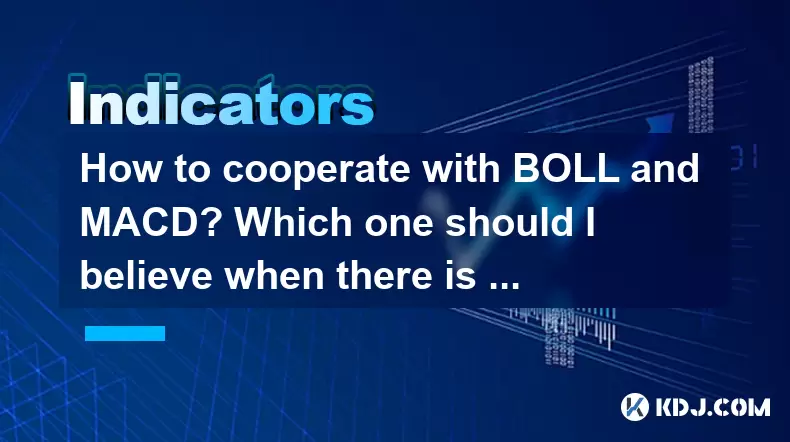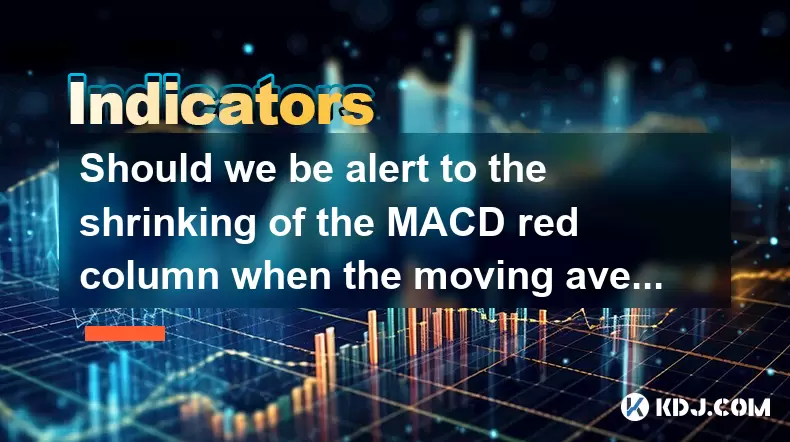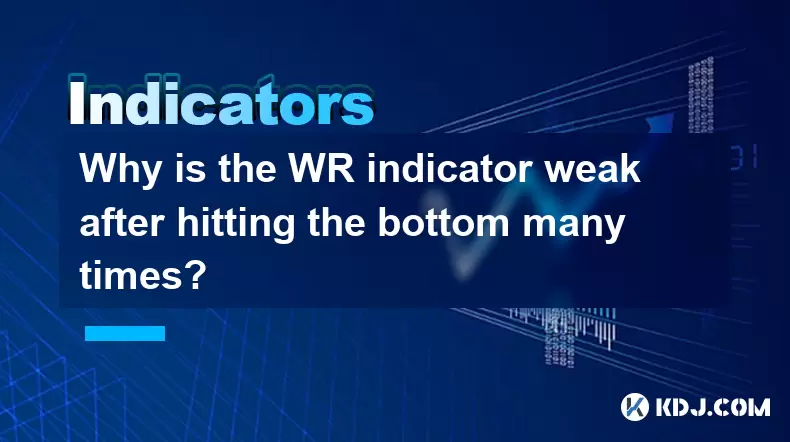-
 Bitcoin
Bitcoin $101,898.5005
-0.75% -
 Ethereum
Ethereum $2,258.1125
-1.07% -
 Tether USDt
Tether USDt $1.0004
0.01% -
 XRP
XRP $2.0178
-2.93% -
 BNB
BNB $624.0243
-1.53% -
 Solana
Solana $134.3298
-0.90% -
 USDC
USDC $0.9999
0.01% -
 TRON
TRON $0.2675
-2.05% -
 Dogecoin
Dogecoin $0.1538
-1.96% -
 Cardano
Cardano $0.5482
-1.11% -
 Hyperliquid
Hyperliquid $35.5636
5.45% -
 Bitcoin Cash
Bitcoin Cash $453.4902
-1.66% -
 Sui
Sui $2.5134
-2.97% -
 UNUS SED LEO
UNUS SED LEO $9.1292
1.77% -
 Chainlink
Chainlink $11.8457
-1.60% -
 Stellar
Stellar $0.2312
-2.73% -
 Avalanche
Avalanche $16.9721
0.29% -
 Toncoin
Toncoin $2.7549
-3.82% -
 Shiba Inu
Shiba Inu $0.0...01081
-1.10% -
 Litecoin
Litecoin $80.8250
-0.71% -
 Hedera
Hedera $0.1374
0.21% -
 Monero
Monero $305.4827
-2.36% -
 Ethena USDe
Ethena USDe $1.0006
0.00% -
 Dai
Dai $1.0000
-0.01% -
 Polkadot
Polkadot $3.2085
-3.12% -
 Bitget Token
Bitget Token $4.0845
-3.13% -
 Uniswap
Uniswap $6.3353
-1.63% -
 Pi
Pi $0.5085
-0.70% -
 Pepe
Pepe $0.0...08913
-3.82% -
 Aave
Aave $232.7090
-0.58%
How to cooperate with BOLL and MACD? Which one should I believe when there is a divergence between the two?
Use Bollinger Bands and MACD together to confirm trading signals and manage divergences by assessing market conditions and using additional indicators for better decisions.
May 23, 2025 at 07:42 am

In the world of cryptocurrency trading, technical analysis tools like the Bollinger Bands (BOLL) and Moving Average Convergence Divergence (MACD) are widely used to help traders make informed decisions. Understanding how to cooperate with these two indicators and what to do when there's a divergence between them is crucial for effective trading. This article will delve into these topics in detail.
Understanding Bollinger Bands (BOLL)
Bollinger Bands are a volatility indicator developed by John Bollinger. They consist of a middle band being a simple moving average (SMA), typically set at 20 periods, and two outer bands that are standard deviations away from the middle band. The standard setting is two standard deviations, but this can be adjusted based on the trader's preference.
The primary use of Bollinger Bands is to identify overbought and oversold conditions in the market. When the price touches or moves outside the upper band, it might indicate that the asset is overbought, and a price correction could be imminent. Conversely, when the price touches or moves outside the lower band, it might suggest that the asset is oversold, and a price increase could be on the horizon.
Understanding Moving Average Convergence Divergence (MACD)
Moving Average Convergence Divergence (MACD) is a trend-following momentum indicator that shows the relationship between two moving averages of a security's price. The MACD is calculated by subtracting the 26-period Exponential Moving Average (EMA) from the 12-period EMA. The result of this calculation is the MACD line. A 9-period EMA of the MACD, called the signal line, is then plotted on top of the MACD line, which can function as a trigger for buy and sell signals.
When the MACD line crosses above the signal line, it generates a bullish signal, suggesting it might be a good time to buy. When the MACD line crosses below the signal line, it generates a bearish signal, indicating it might be a good time to sell.
Cooperating with BOLL and MACD
To effectively cooperate with Bollinger Bands and MACD, traders often use these indicators in tandem to confirm signals and reduce false positives. Here’s how you can do it:
Confirming Entry and Exit Points: When the price touches the lower Bollinger Band and the MACD line crosses above the signal line, it can be a strong buy signal. Conversely, when the price touches the upper Bollinger Band and the MACD line crosses below the signal line, it can be a strong sell signal.
Identifying Trends: Bollinger Bands can help identify the current trend's strength. If the bands are expanding, it indicates increasing volatility, which can be a sign of a strong trend. Combining this with the MACD can help confirm whether the trend is bullish or bearish. For instance, if the bands are expanding and the MACD line is above the signal line, it reinforces a bullish trend.
Using Bollinger Bands for Overbought/Oversold Conditions: While the MACD can give you trend and momentum signals, Bollinger Bands can help you identify when the market might be due for a reversal. If the MACD shows a strong bullish trend but the price is consistently touching the upper Bollinger Band, it might be a signal to take profits or prepare for a potential pullback.
Handling Divergence Between BOLL and MACD
Divergence occurs when the two indicators give conflicting signals. Knowing how to handle these situations is essential for successful trading.
Understanding the Nature of the Indicators: Remember that Bollinger Bands are primarily used to measure volatility and identify overbought/oversold conditions, while MACD focuses on trend and momentum. If there's a divergence, consider which aspect (volatility or trend) is more relevant to your trading strategy.
Assessing Market Conditions: If the Bollinger Bands indicate an overbought condition but the MACD suggests a strong bullish trend, consider the broader market context. Are there any significant news events or market sentiment shifts that could explain the divergence? Sometimes, a strong trend can override overbought conditions, and vice versa.
Using Additional Indicators: When faced with a divergence, it can be helpful to consult additional indicators like the Relative Strength Index (RSI) or the Stochastic Oscillator to get a more comprehensive view of the market. If these additional indicators align with one of the conflicting signals, it might help you make a more informed decision.
Making a Decision: If the Bollinger Bands suggest an overbought condition and the MACD shows a bearish signal, you might consider selling or taking profits. If the Bollinger Bands suggest an oversold condition and the MACD shows a bullish signal, you might consider buying. However, if the divergence is significant and you're unsure, it might be wise to wait for further confirmation or reduce your position size to manage risk.
Practical Application in Trading
To illustrate how to apply these concepts in real trading scenarios, let's go through a hypothetical example:
Scenario: You're trading Bitcoin (BTC) and notice that the price has touched the lower Bollinger Band. At the same time, the MACD line has just crossed above the signal line, indicating a potential bullish trend.
Action:
- Confirm the Signal: Check if other indicators like the RSI also suggest that BTC is oversold.
- Enter the Trade: If the signal is confirmed, you might decide to buy BTC, setting a stop-loss just below the recent low to manage risk.
- Monitor the Trade: Keep an eye on the Bollinger Bands and MACD. If the price moves back within the Bollinger Bands and the MACD line continues to rise, it might reinforce your bullish stance. If the price breaks the upper Bollinger Band and the MACD line crosses below the signal line, it might be time to take profits or reassess your position.
Handling Real-Time Divergence
In real-time trading, divergences between Bollinger Bands and MACD can be challenging but manageable with the right approach:
Monitor Closely: Keep a close watch on both indicators. If the Bollinger Bands show an overbought condition but the MACD remains bullish, consider the strength of the trend. Is the MACD line far above the signal line, indicating strong momentum?
Adjust Your Strategy: If the divergence persists, you might need to adjust your trading strategy. For instance, if the Bollinger Bands indicate an overbought condition but the MACD remains bullish, you might choose to hold your position but tighten your stop-loss to protect profits.
Use Historical Data: Review past instances of divergence between these indicators to see how the market reacted. This can provide valuable insights into how to handle current divergences.
Frequently Asked Questions
Q1: Can I use Bollinger Bands and MACD for all cryptocurrencies?
A1: Yes, you can use Bollinger Bands and MACD for all cryptocurrencies. However, the effectiveness of these indicators can vary depending on the liquidity and volatility of the specific cryptocurrency. For less liquid assets, the signals might be less reliable due to larger price swings and fewer data points.
Q2: How often should I check the Bollinger Bands and MACD when trading?
A2: The frequency of checking these indicators depends on your trading style. For day traders, checking every few minutes or hourly might be necessary. For swing traders, checking daily or even weekly might suffice. It's important to find a balance that suits your strategy without causing over-trading.
Q3: Are there any specific settings for Bollinger Bands and MACD that work best for cryptocurrency trading?
A3: While the default settings for Bollinger Bands (20 periods for the SMA and 2 standard deviations) and MACD (12, 26, and 9 periods) are commonly used, you might need to adjust them based on the specific cryptocurrency and your trading timeframe. For highly volatile cryptocurrencies, you might want to use shorter periods to capture more immediate trends.
Q4: How can I avoid false signals when using Bollinger Bands and MACD together?
A4: To avoid false signals, always confirm the signals from Bollinger Bands and MACD with other indicators like RSI or Stochastic Oscillator. Additionally, consider the broader market context and use historical data to understand how these indicators have performed in similar situations in the past.
Disclaimer:info@kdj.com
The information provided is not trading advice. kdj.com does not assume any responsibility for any investments made based on the information provided in this article. Cryptocurrencies are highly volatile and it is highly recommended that you invest with caution after thorough research!
If you believe that the content used on this website infringes your copyright, please contact us immediately (info@kdj.com) and we will delete it promptly.
- DOGE Recovery Amid US-Iran Tensions: A Market Rollercoaster
- 2025-06-23 20:45:13
- Fiserv, PayPal, and Stablecoins: A New Era of Interoperability?
- 2025-06-23 20:45:13
- Hacken Token's Wild Ride: Minting Exploit and the Cryptocurrency Crash
- 2025-06-23 21:05:12
- Dogecoin, Cloud Mining, and Blockchain: A Meme's Evolution
- 2025-06-23 21:25:12
- Layer 1 Turmoil: CEO Ousted Amidst Scam Allegations
- 2025-06-23 21:05:12
- Solana's Stumble: Price Crash and Network Exodus?
- 2025-06-23 21:25:12
Related knowledge

What is the significance of the gap formed by the gap opening not being filled within five days?
Jun 23,2025 at 09:42pm
Understanding Gaps in Cryptocurrency TradingIn the world of cryptocurrency trading, a gap refers to a situation where the price of an asset jumps from one level to another without any trading activity occurring between those two levels. This often happens over weekends or holidays when the market is closed, and significant news or events occur that impa...

Does the second golden cross of MACD above the zero axis represent the continuation of strength?
Jun 23,2025 at 08:21pm
Understanding the MACD IndicatorThe Moving Average Convergence Divergence (MACD) is a widely used technical analysis tool in cryptocurrency trading. It consists of three main components: the MACD line, the signal line, and the histogram. The MACD line is calculated by subtracting the 26-period Exponential Moving Average (EMA) from the 12-period EMA. The...

Is it effective when the DIF line suddenly crosses the zero axis when the volume is shrinking and the market is trading sideways?
Jun 23,2025 at 07:29pm
Understanding the DIF Line in Technical AnalysisThe DIF line, or the Difference Line, is a critical component of the MACD (Moving Average Convergence Divergence) indicator, widely used in technical analysis across cryptocurrency and traditional financial markets. It represents the difference between the 12-period EMA (Exponential Moving Average) and the...

Should we be alert to the shrinking of the MACD red column when the moving average is arranged in a bullish pattern?
Jun 23,2025 at 08:14pm
Understanding the MACD Red Column and Its SignificanceThe Moving Average Convergence Divergence (MACD) is a widely used technical indicator in cryptocurrency trading. It consists of three main components: the MACD line, the signal line, and the MACD histogram (the red column). The red column represents the difference between the MACD line and the signal...

Why is the WR indicator weak after hitting the bottom many times?
Jun 23,2025 at 07:56pm
Understanding the WR Indicator in Cryptocurrency TradingThe Williams %R (WR) indicator is a momentum oscillator used by traders to identify overbought and oversold levels in the market. It ranges from 0 to -100, with readings above -20 considered overbought and below -80 considered oversold. In the context of cryptocurrency trading, where volatility is ...

Is the shrinking cross star after the historical high a signal of topping?
Jun 23,2025 at 05:56pm
Understanding the Shrinking Cross Star PatternIn technical analysis, candlestick patterns are essential tools for traders to predict potential price movements. One such pattern is the shrinking cross star, which appears as a small-bodied candle with long upper and lower shadows, indicating indecision in the market. When this pattern forms after an asset...

What is the significance of the gap formed by the gap opening not being filled within five days?
Jun 23,2025 at 09:42pm
Understanding Gaps in Cryptocurrency TradingIn the world of cryptocurrency trading, a gap refers to a situation where the price of an asset jumps from one level to another without any trading activity occurring between those two levels. This often happens over weekends or holidays when the market is closed, and significant news or events occur that impa...

Does the second golden cross of MACD above the zero axis represent the continuation of strength?
Jun 23,2025 at 08:21pm
Understanding the MACD IndicatorThe Moving Average Convergence Divergence (MACD) is a widely used technical analysis tool in cryptocurrency trading. It consists of three main components: the MACD line, the signal line, and the histogram. The MACD line is calculated by subtracting the 26-period Exponential Moving Average (EMA) from the 12-period EMA. The...

Is it effective when the DIF line suddenly crosses the zero axis when the volume is shrinking and the market is trading sideways?
Jun 23,2025 at 07:29pm
Understanding the DIF Line in Technical AnalysisThe DIF line, or the Difference Line, is a critical component of the MACD (Moving Average Convergence Divergence) indicator, widely used in technical analysis across cryptocurrency and traditional financial markets. It represents the difference between the 12-period EMA (Exponential Moving Average) and the...

Should we be alert to the shrinking of the MACD red column when the moving average is arranged in a bullish pattern?
Jun 23,2025 at 08:14pm
Understanding the MACD Red Column and Its SignificanceThe Moving Average Convergence Divergence (MACD) is a widely used technical indicator in cryptocurrency trading. It consists of three main components: the MACD line, the signal line, and the MACD histogram (the red column). The red column represents the difference between the MACD line and the signal...

Why is the WR indicator weak after hitting the bottom many times?
Jun 23,2025 at 07:56pm
Understanding the WR Indicator in Cryptocurrency TradingThe Williams %R (WR) indicator is a momentum oscillator used by traders to identify overbought and oversold levels in the market. It ranges from 0 to -100, with readings above -20 considered overbought and below -80 considered oversold. In the context of cryptocurrency trading, where volatility is ...

Is the shrinking cross star after the historical high a signal of topping?
Jun 23,2025 at 05:56pm
Understanding the Shrinking Cross Star PatternIn technical analysis, candlestick patterns are essential tools for traders to predict potential price movements. One such pattern is the shrinking cross star, which appears as a small-bodied candle with long upper and lower shadows, indicating indecision in the market. When this pattern forms after an asset...
See all articles
























































































